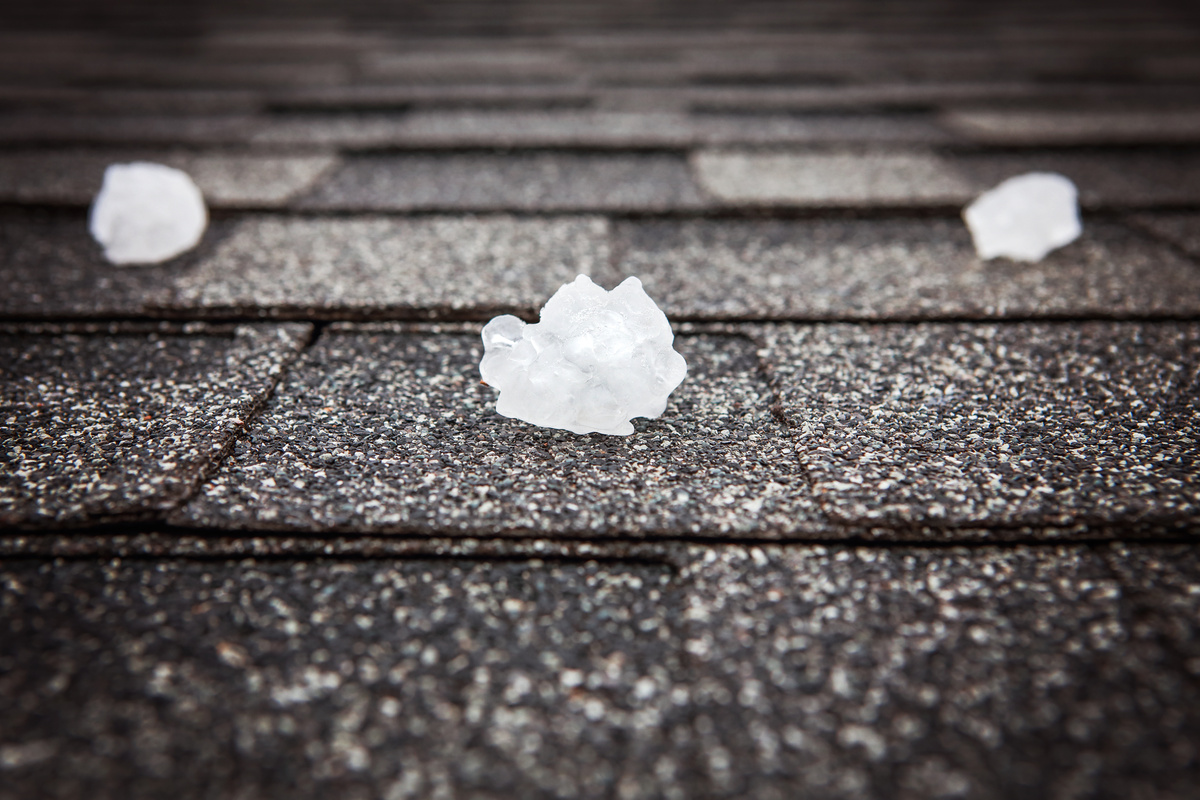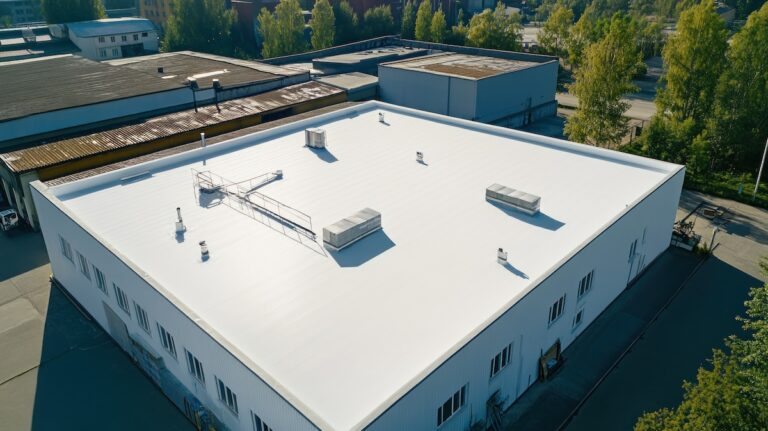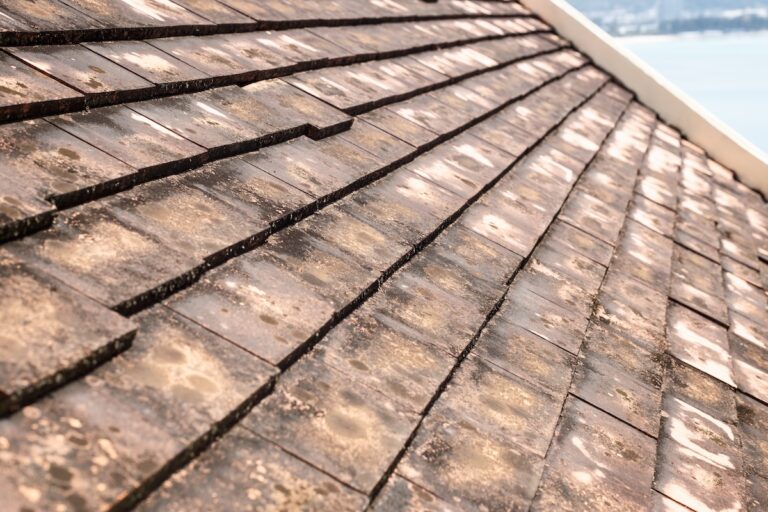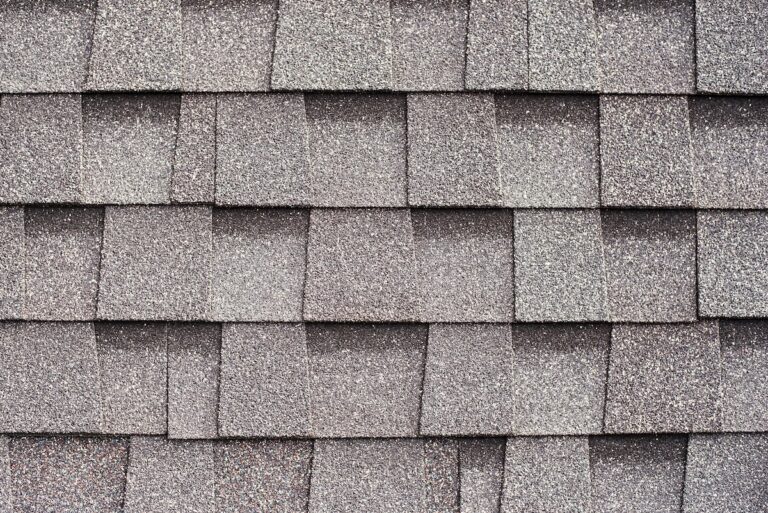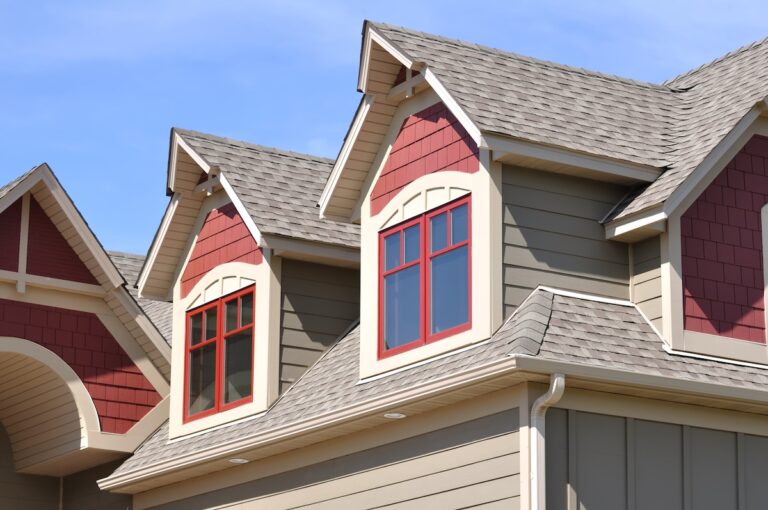Roof hail damage is one of the most common and costly issues homeowners face after a severe storm, often requiring quick action to prevent further roof damage and expensive repairs. Hail is one of the most unpredictable and destructive forces of nature. When a hail storm strikes, it can cause significant roof hail damage in a matter of minutes. Whether you have an asphalt shingle roof or a metal roof, no material is completely immune. Knowing what to do after a hailstorm can make all the difference in protecting your home and avoiding costly repairs.
This guide will walk you through:
- What roof damage from hail looks like
- Why hail damage should never be ignored
- Steps for repairing hail damage and filing an insurance claim
Let’s start by understanding how hail affects different roofing materials.
⛈️ What Size Hail Can Damage a Roof?
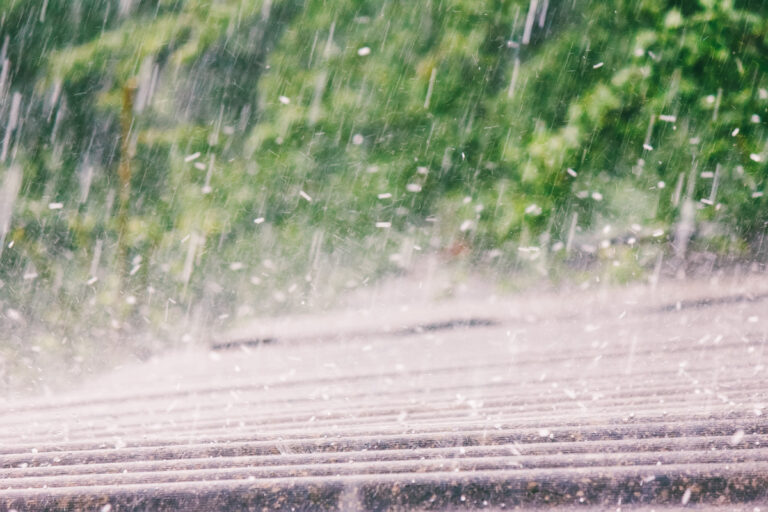
Many homeowners wonder if small hail can really harm their roof. The truth is that damage depends not just on size, but also on wind speed, roof condition, and the type of roofing materials in place.
- Pea-sized (1/4 inch): Unlikely to cause visible damage on its own, but repeated storms may gradually wear down asphalt shingles.
- Marble-sized (1/2 inch): Can lead to minor bruising or granule loss on older or worn roofs.
- Quarter-sized (1 inch): This size is when real damage starts to occur, especially to asphalt shingles or vent covers.
- Golf ball-sized (1.75 inches) and larger: Easily dents metal roofs, cracks shingles, and may even damage the roof deck.
Even if your shingles look intact from the ground, unseen cracks or bruises can compromise your roof’s integrity over time.
🔍 What Hail Damage Looks Like on a Roof
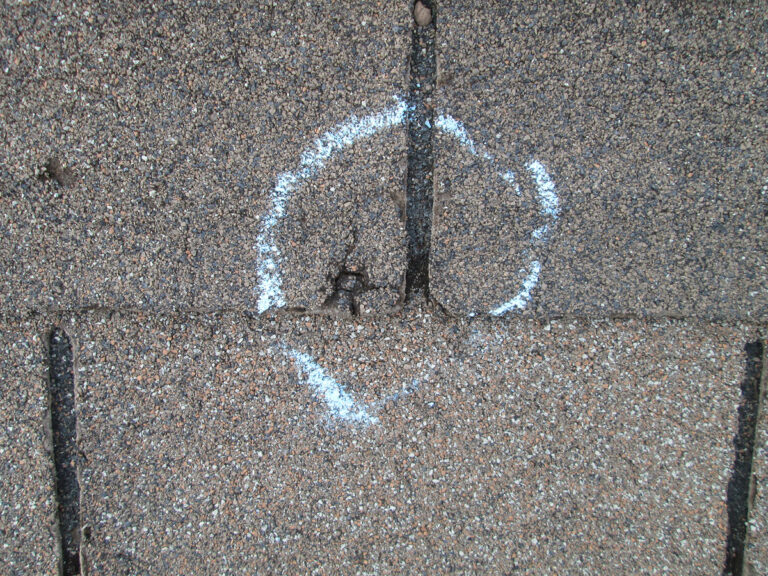
Roof hail damage isn’t always obvious to the untrained eye. That’s why homeowners should know what to look for after a hail storm.
- Bruises or dents: Visible on asphalt shingles or metal roofing, often appearing as soft spots or small divots.
- Granule loss: Asphalt shingles may shed protective granules, exposing the fiberglass layer beneath.
- Cracked or split shingles: Hail can cause sharp fractures in brittle or aging shingles.
- Damaged flashing and vents: Hail impacts can dent metal flashing or break seals around roof penetrations.
- Clogged or dented gutters: Look for signs of granule buildup or bent gutter sections as indirect evidence of roof damage.
If you’re unsure, a professional roofing contractor can safely inspect your roof and spot hidden signs of damage.
⚠️ Why Hail Damage Is Dangerous for Your Roof
Hail damage doesn’t just affect how your roof looks—it can compromise its entire structure.
- Water infiltration: Exposed underlayment and cracked shingles allow water to seep in, leading to leaks and water damage.
- Reduced lifespan: Even light hail can shorten the life of asphalt shingles or weaken a metal roof.
- Mold and mildew: Persistent moisture leads to mold growth in attics and ceilings.
- Structural damage: Severe hail can damage the roof deck, causing sagging, rot, or even collapse.
Ignoring roof damage from hail can turn a manageable repair into a costly roof replacement.
✅ 5 Steps to Take When Repairing Hail Damage
If your roof was hit by hail, follow these steps to assess and address the damage properly:
1. Inspect the Roof (Safely)
After a hail storm, perform a ground-level visual inspection. Look for dislodged shingles, gutter damage, or fallen debris. Then, contact a professional roofing contractor for a full inspection. They’ll assess the full extent of your roof hail damage and determine if it warrants a claim.
2. Document the Damage
Take clear photos of any hail damaged roof sections, especially close-ups of visible impacts, torn shingles, or exposed areas. Your roofing contractor should also provide a detailed inspection report to share with your insurance company.
3. File an Insurance Claim
Notify your insurer as soon as possible. Provide all your documentation, including photos and contractor reports. Your insurance company will assign an adjuster to visit your home, assess the roof damage, and determine the claim amount.
4. Review Estimates & Choose a Contractor
Get estimates from more than one professional roofing contractor. Look for someone with experience handling insurance claims and hail damage repairs. Compare materials, warranty options, and timelines before making a decision.
5. Repair or Replace the Roof
Once your claim is approved, schedule repairs promptly. This may involve replacing a few shingles, resealing flashing, or a complete roof replacement depending on the extent of the damage.
📋 How to File a Roof Insurance Claim for Hail Damage
Dealing with insurance can feel overwhelming, but knowing the steps ahead of time makes the process smoother.
- Call your insurance company: Report the damage quickly and open a claim.
- Share your documentation: Include photos, inspection reports, and any temporary repair receipts.
- Meet with the adjuster: Walk them through the damage with your roofing contractor if possible.
- Review your coverage: Understand your deductible and policy limits.
- Approve and schedule repairs: Once approved, sign an agreement with your contractor and get the work started.
Working with a good roofing company that understands the insurance process can save time and frustration.

💵 Typical Repair Costs for Hail Damaged Roofs
If you’re paying out-of-pocket, here’s what you can expect:
- Minor repairs (few shingles or flashing): $200 – $1,000
- Moderate damage (partial roof sections): $1,000 – $5,000
- Major repairs or full replacement: $5,000 – $15,000+
Costs can vary depending on roofing materials, accessibility, and extent of structural damage. An asphalt shingle roof may cost less to repair than a metal roof, but still requires quality work to ensure long-term protection.
🤝 Choose the Right Roofing Contractor After a Hail Storm
When your roof suffers hail damage, don’t leave repairs to chance. Always choose a licensed, insured, and local roofing contractor with experience in storm damage restoration.
- Check reviews and certifications
- Ask about warranties and roofing materials used
- Confirm the contractor works directly with insurance companies
At G. Cannon, we specialize in inspecting and repairing hail damaged roofs. We’ll walk you through the process from inspection to insurance to final repair, keeping you informed every step of the way.
🛠️ Get Expert Help for Your Hail Damaged Roof
Hail storms can wreak havoc on even the best roofing systems. The good news is, with prompt action and help from a professional roofing contractor, you can restore your roof’s integrity and safeguard your home from future storms.
Whether you have an asphalt shingle roof or a metal roof, don’t wait to address possible hail damage. Our expert team at G. Cannon is here to provide honest inspections, help you work with your insurance company, and make sure your roof is repaired the right way.
Contact G. Cannon today for a free estimate and get started on the road to recovery.
